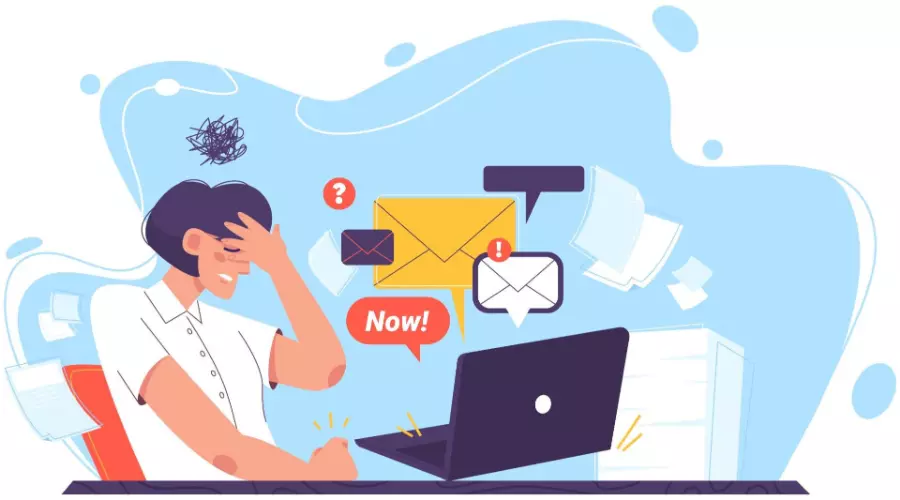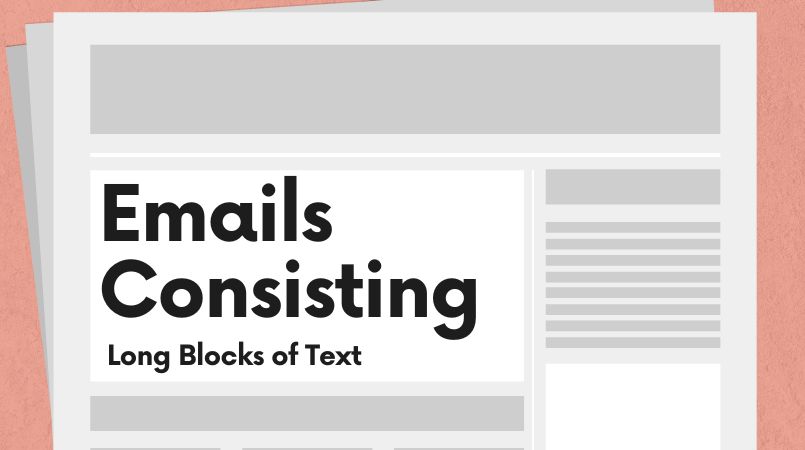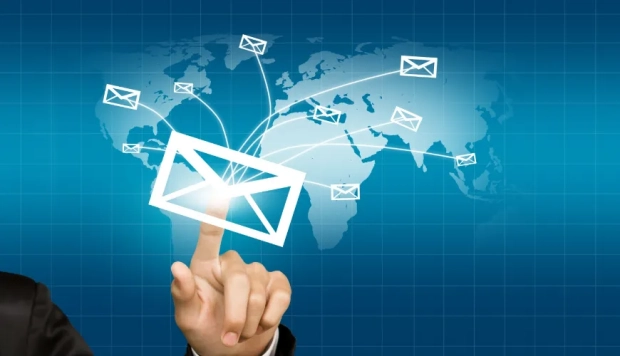10 Common Email Mistakes and How to Avoid Them

The world has seen multiple technological advancements over time, which have led to changes in how we communicate. From plain cellphone texts to modern messenger applications, things have changed pretty swiftly. However, emails still hold a prominent position in corporate communication. Many people use emails to reach out to their team leads, senior management, and those collaborating on a particular project.
In addition to using emails for professional and personal communication, brands also use them to promote their products or services and reach out to their target audience. Email marketing is still considered one of the most effective ways to deliver the highest ROI to brands. However, you need to watch out for a few mistakes while writing or sending emails, whether you are using them for personal communication or on your brand's behalf.
Most people don't pay much attention to mistakes while crafting or sending emails. Resultantly, they end up enduring consequences, including serious professional issues, monetary losses due to miscommunication, reputational setbacks, and a bad brand image. Hence, staying vigilant of email mistakes and avoiding them is the best possible solution. This article outlines a few common email mistakes and how to avoid them. Read on to learn more and ensure impeccable emails.
1. Vague or Ineffective Subject Line
Put your feet in the recipient's shoes and ask yourself what you will see first when you receive an email. The answer would be the subject line of the received email. Yes! Most recipients focus on the subject line upon receiving an email. Hence, the subject line of your email should pack all the ingredients capable of compelling the recipient to pay attention to the message you have sent.
Using a vague, weak, or boring subject line would make your email unappealing for most recipients, and you may see most of them giving up the idea of reading your message. Hence, you must ensure a relevant and intriguing subject line capable of triggering curiosity and forcing them to open your email. However, don't try to use the subject line as a clickbait.
2. Unprofessional Email Address
Just like a boring or generic subject line, an email address that looks unprofessional may also work as a counter-effect. Your email may get ignored or deleted right away without getting opened. Hence, your effort in crafting an email copy that features valuable information for the recipient will go in vain, and you won't get any productive results from the entire process.
Considering this issue, it is important to ensure a professional email address. Keep your email address as short as possible. Your email address should only feature your name and that of your company. Using excessive numbers in your email address, including nicknames, or adding inappropriate words that sound unprofessional would lead to ignorance of your emails and reputational setbacks.
3. Emails Consisting of Long Blocks of Text

The average human attention span has become significantly shorter lately, and it is now much lesser than that of infamously ill-focused goldfish. Hence, no one likes to read long blocks of text, no matter how important the information is for them.
Remember this issue and keep your email copy as short as possible. There is no need to write unnecessarily lengthy messages. Many recipients won't pay attention to the message upon seeing long blocks of text.
If you aim for the best response rate, covering your message in 50 to 125 words is the way to go. Keeping the length of the message between 50 and 125 words guarantees the best engagement rate and over 50% response rate.
If you find it challenging to keep your message brief and concise, using an advanced text summarizer will do the trick. An efficient AI-powered summarizing tool will cover the highlights of underlying text and retain its intent to help you get the most out of your email messages.
4. Failure to Check Email Content for Mistakes
One of the most common mistakes individuals and even brands make while sending messages through emails to various recipients is failing to revisit the content and analyze it for typos and factual mistakes. They are in a hurry to send their message to recipients, so they often don't find it essential to go through the content they have written before hitting the send button. This issue can lead to serious counter-effects. Typos and factual mistakes in your content may raise suspicions about your credibility, trustworthiness, and professionalism. Hence, it is always a good idea to go through the content you have written for an email you want to send to your colleague, admin, manager, client, or prospect to avoid miscommunications and reputation setbacks.
5. Sending Emails without Proofreading
While checking for typos and factual mistakes is essential, you must also avoid grammar, punctuation, and spelling errors in your email messages. However, many people also overlook this process; the reason is the same: they are in a hurry to send their messages. Including too many grammar, spelling, and punctuation errors means a lack of professionalism. Such emails would do nothing but annoy the recipients. Hence, avoiding such mistakes is a must.
Many people think that doing so will take significant time and effort. However, a top-notch grammar corrector can help you identify all types of mistakes effortlessly. It will detect all your text's grammar, spelling, and style errors and offer suggestions to fix them immediately. It will also display the reason behind suggesting particular suggestions to help you avoid mistakes you have already made while writing the email content.
6. Failure to Attach Necessary Information
Another problem that often occurs while writing emails quickly is failing to attach necessary URLs and files to the email. Some people may say it doesn't matter much, as you can send a follow-up email to rectify this mistake. However, what about the impact that has been made because of this simple error? Your little hurry may lead to the annoyance of recipients.
The loss of credibility and questions about your professionalism are additional when such mistakes happen. Hence, it is essential to avoid such mistakes. The best way to do that is to stay vigilant and ensure you have attached all the necessary files and links to the email.
The best way to ensure it is revisiting the entire message while paying attention to detail before hitting the send button.
7. Absence of Call to Action

You expect the recipient to respond to your email in a particular way, whether you are sending it for personal, professional, or promotional purposes. However, how come the recipient will get to know what to do if you haven't mentioned how to respond to your email? It is only possible when you add a clear CTA (call to action) to your email.
Otherwise, the recipient will be left wondering what to do, and you will fail to get ideal results from your email.
Hence, ensure that you have added a clear CTA that is easily visible to the recipient, whether they read the entire message or just prefer skimming it. Doing so will help you get better response rates. Otherwise, your email becomes a part of the trash bin.
8. Excessive Use of Punctuation without Any Reason
Another common mistake that is often overlooked while writing emails is the excessive use of punctuation symbols, even though there is no need for them. We all know that emails are mostly used for professional communications. Some simple issues may lead to serious questions about the professionalism of the sender, and excessive punctuation marks is one of them.
We understand that sometimes you may want to use periods or exclamation marks to emphasize something important. However, placing too many exclamation marks or periods after a particular word will do nothing but annoy the recipient right away. Some recipients may even give up the idea of reading your content. Hence, it is better to limit unnecessary use of punctuation.
9. Adding Emojis and Abbreviations
Using emojis is a great way to express emotions effortlessly. The same applies to abbreviations when referring to a particular term like HMB, ION etc. However, using both these elements is more suitable when sending DMs through text or messenger applications. Using them while writing emails sounds a bit awkward. The reason is pretty simple: you are sending professional messages via email.
Using emojis and abbreviations while crafting an email message is unprofessional and may lead to miscommunications. Not everyone knows the exact meanings of emojis or abbreviations you often use. Hence, ensure proper language while crafting messages you plan to send through emails to keep things professional and avoid using emojis and abbreviations.
10. Failure to Use the Right Tone
The use of the right tone in professional communication matters a lot. You can't overlook it. Hence, you must stay highly vigilant regarding the language you use while writing the message you plan to send via email. You must also pay attention to the way you address the recipient so that you don't sound cold or impersonal to them.
This is especially true when you are contacting someone for the first time. The recipient's response depends a lot on how they interpret your message. You may not get the desired response if your tone sounds cold or awkward. Hence, it is always a good idea to revisit your message and pay attention to the tone before hitting the send button.
In the End
Writing a professional email requires careful consideration and full effort to avoid mistakes. Those who overlook this process often lose, either by creating a wrong impression or failing to communicate their message properly. We have discussed common mistakes often made while writing emails and ways to avoid them. Hopefully, you will have a lot to take away from this article. Happy emailing!



